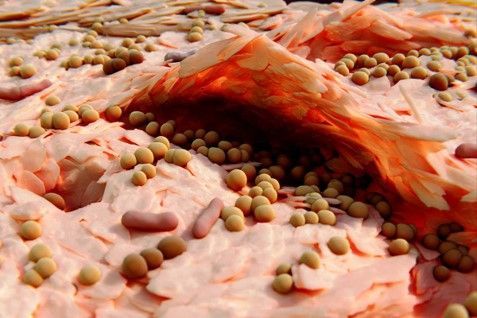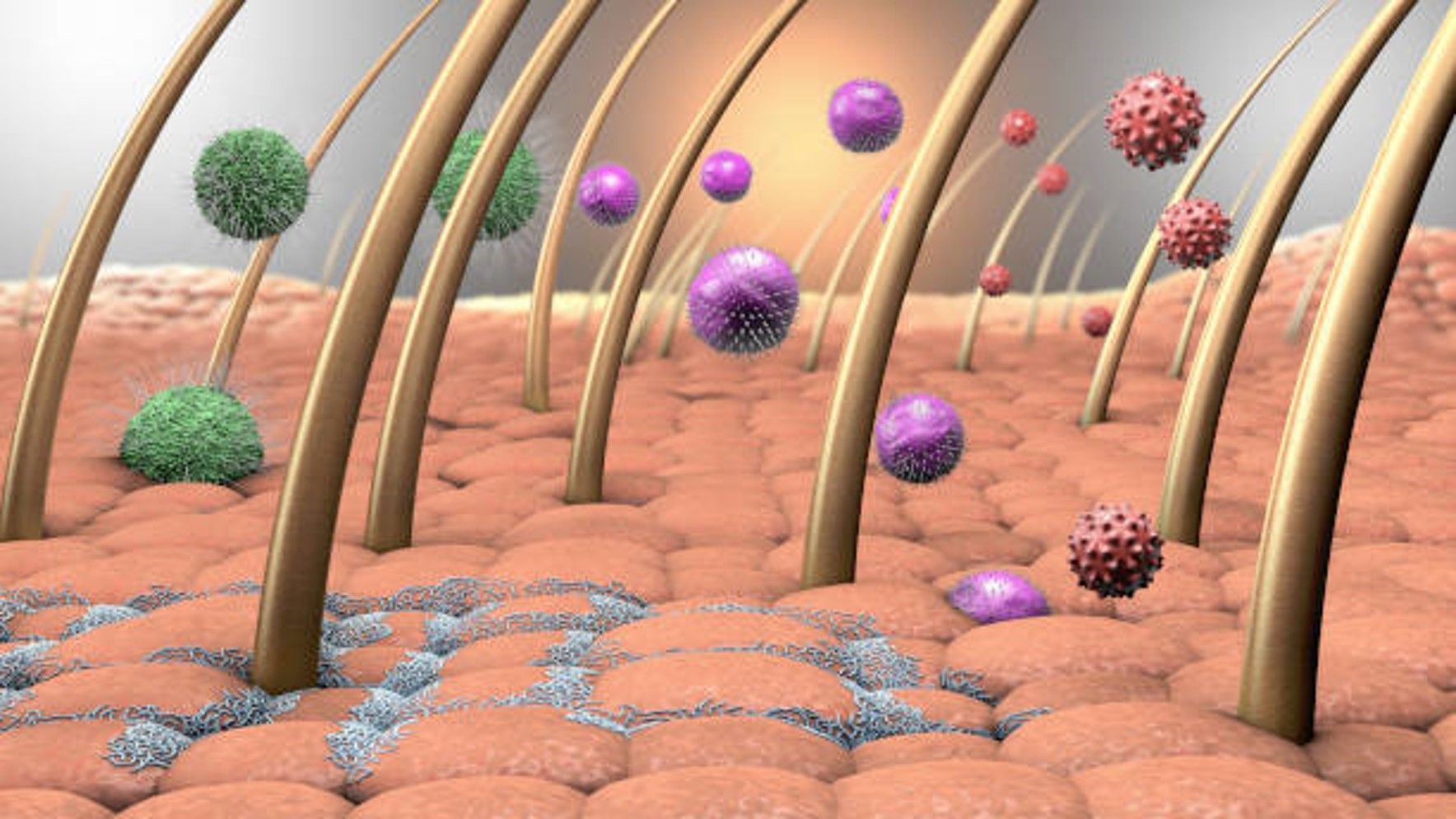The skin microbiome
The skin microbiome refers to the diverse and amazing community of microorganisms that inhabit our skin. These microorganisms include bacteria, viruses, fungi, and other microbes, and they play a crucial role in maintaining skin health and functionality. The skin microbiome varies across different regions of the body, influenced by factors such as skin moisture, temperature, and sebum production.
Here are key aspects of our skin’s microbiome:
Microbial Diversity:
Bacteria:
Staphylococcus and Streptococcus: These are common genera found on the skin. Staphylococcus epidermidis, in particular, is a predominant species and is considered a commensal bacterium, helping to protect against pathogenic invaders.
Propionibacterium: Predominant in sebaceous areas, these bacteria are involved in the metabolism of sebum and are commonly found in hair follicles.
Corynebacterium: Abundant on moist areas of the skin, they contribute to the breakdown of lipids and are part of the normal skin flora.
Fungi:
Malassezia: This genus of fungi is common on the skin and is involved in the degradation of skin lipids. While generally harmless, certain species can contribute to skin conditions like dandruff and seborrheic dermatitis.
Viruses:
Bacteriophages: These are viruses that infect bacteria and are present on the skin, contributing to the regulation of bacterial populations.
Archaea:
Methanobrevibacter smithii: This archaeon has been identified on the skin and is associated with methanogenesis, a process that converts carbon dioxide and hydrogen to methane.
Skin Regions and Microbial Niches:
Sebaceous Areas:
These areas, rich in sebaceous glands like the face, have a higher abundance of oil-loving (lipophilic) bacteria such as Propionibacterium acnes.
Moist Areas:
Axillae, inguinal region, and other moist areas have a higher prevalence of bacteria adapted to the humid environment, such as Staphylococcus and Corynebacterium species.
Microbial Niches:
Microbes inhabit specific niches within the skin, including the hair follicles, sweat ducts, and the stratum corneum, each contributing to the overall diversity and functionality of the skin microbiome.
Functions of the Skin Microbiome:
Barrier Function:
The skin microbiome helps maintain the physical barrier of the skin by preventing the colonization of harmful pathogens through competitive exclusion and the production of antimicrobial substances.
Immune System Regulation:
Microbes on the skin interact with immune cells, influencing immune responses and contributing to the development of a balanced and effective immune system.
Metabolism and Nutrient Cycling:
Microbes play a role in metabolizing skin-secreted compounds like sebum and sweat. This metabolic activity contributes to nutrient cycling and the maintenance of a stable environment on the skin.
Factors Influencing the Skin Microbiome:
Host Genetics:
Individual genetic factors influence the composition and stability of the skin microbiome. Genetic variations can affect factors like skin pH, which in turn influences microbial communities.
Environment:
Climate, humidity, and exposure to environmental factors like UV radiation and pollutants can shape the skin microbiome.
Hygiene Practices:
The use of skincare products, soaps, and antibiotics can disrupt the balance of the skin microbiome. Antibiotic use, in particular, can lead to significant alterations in microbial communities.
Imbalance and Skin Disorders:
Dysbiosis:
An imbalance in the skin microbiome, or dysbiosis, is associated with various skin conditions. For example, an overgrowth of certain bacteria may contribute to acne, while a reduction in microbial diversity is linked to conditions like eczema and psoriasis.
Research and Therapeutic Potential:
Probiotics, Prebiotics, and Postbiotics:
Probiotics are live microorganisms that can confer health benefits. Prebiotics are substances that promote the growth of beneficial microbes, and postbiotics are the metabolic byproducts of microbes. These are being explored for their potential in modulating the skin microbiome and treating skin conditions.
Topical Microbiome-friendly Products:
There is a growing interest in developing skincare products that support a healthy skin microbiome rather than disrupting it. These may include products with prebiotics, probiotics, or postbiotics.
Microbial Transplants:
Similar to fecal microbiota transplants for gut health, microbial transplants involving the transfer of beneficial skin microbes are being investigated for certain skin conditions.
The study of the skin microbiome is a dynamic and evolving field with significant implications for dermatology, skincare, and overall health. Ongoing research continues to uncover the intricate relationships between the skin and its microbial inhabitants.

What to look out for?
Over washing:
Overexposure to water and a harsh cleanser could cause a damaged skin barrier. It can strip away the natural lipid barrier on our skin
Over-exfoliating;
People love instant gratification, when you over-exfoliate your skin, you remove the functional “skin barrier”
Pollution, bad or dry air quality:
Research has shown that pollution and dry air can affect our barrier. So some people experience sensitive and itchy skin when the air quality is poor.
So they should limit outdoor activities during pollution, wear protective masks and clothing outdoors and use an air purifier.
Stress and lack of sleep:
Who has experienced a “bad skin” day when you lack rest and sleep?
Yes, research shows that lack of sleep or rest can damage your skin barrier and lead to increased transepidermal water loss.
Some internal factors that are out of our control in general are:
Genetics;
Some people (both men and women) have a genetically impaired skin barrier.
We commonly see this in people with atopic dermatitis or eczema. However, good skin care habits can prevent them from getting even worse.
Ageing:
Unfortunately, as we age, our skin barrier get weaker. This is why it’s not uncommon for people to experience drier and more sensitive skin as they age.
How to Repair
Antioxidants:
Vitamin B3: Niacinamide fights oxidative stress and promotes skin renewal by increasing cell turnover
Vitamin B5: works as a moisturizer on the skin and enhances the healing process of skin wounds.
Vitamin D: is a fat-soluble vitamin and one of the most critical vitamins for biological function
Vitamin E: fights off free radicals on the skin, like unprotected sun exposure and air pollution, effective natural barrier to the sun
A diet rich in essential fatty acids or an omega-3 supplement can also help nourish and soothe the skin
Hydrate Continuously:
A damaged epidermis requires moisture, so keeping your face and body well hydrated is critical in the fight to restore and maintain a healthy skin barrier, serums that contain moisture-binding humectants, hyaluronic acid being one
Reduce Inflammation:
Harsh chemicals in acne products, over-exfoliation and retinoids all can inflame conditions like eczema and rosacea. So discontinue using until your skin heals, and then stagger use of anti-acne and anti-aging ingredients to every other day or a few times a week. Ditch cleansers and toners with astringents altogether,
Sunscreen and Supplements:
Sun exposure is one of the leading causes of a damaged skin barrier, and continued exposure to UVA and UVB rays impedes skin-barrier restoration

All material appearing on the ACH GROUP (“content”) is protected by copyright under England & Wales Copyright laws and is the property of the ACH Group or party credited as the provider of the content. You may not copy, reproduce, distribute, publish, display, perform, modify, create derivative works, transmit, or in any way exploit any such content, nor may you distribute any part of this content over any network, including a local area network, sell or offer it for sale, or use such content to construct any kind of database.
You may not alter or remove any copyright or other notice from copies of the content on The ACH Group website. Copying or storing any content except as provided above is expressly prohibited without prior written permission of the ACH Group.
Copyright The ACH Group 2023
